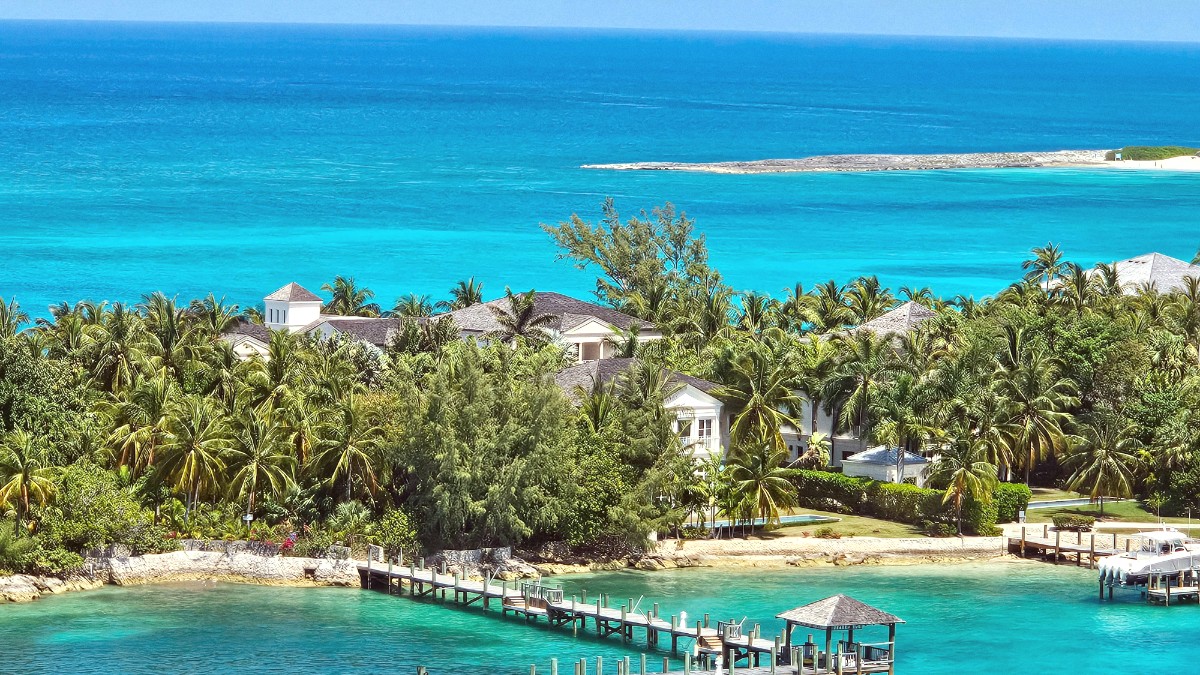
New Providence, The Bahamas
Tours often provide gear. Bringing your own Snorkel mask and snorkel makes for a better fit and hygiene. A Full face snorkel mask is preferred by some. For diving, if you own your own gear (mask, fins, Wetsuit), bringing it can be more comfortable, though dive shops offer rentals.
If deep-sea fishing, guides typically provide gear. For casual shore fishing, a collapsible rod and basic tackle are good to bring. Beach chairs and umbrellas are often available for rent on popular beaches or provided by resorts, so bringing your own is not practical. Kayaks and paddleboards are rentable from many beach vendors and resorts.
TSA-approved luggage locks and a Money belt/RFID blocking wallet for valuables.
A reusable water bottle, Shopping bag, and Utensils for sustainable travel.
Some items are either difficult to find or expensive to purchase upon arrival.
Most visitors arrive by air at Lynden Pindling International Airport (NAS), the main international gateway to The Bahamas. It is approximately 8 miles (13 km) west of downtown Nassau on New Providence Island.
NAS features a modern terminal with duty-free shops, restaurants, currency exchange, ATMs, and free Wi-Fi. US Customs and Border Protection pre-clearance is a significant advantage for US-bound travelers.
Flight frequency increases, and prices are higher, especially around holidays. Booking well in advance during this period is good.
Frequency reduces on some routes, and prices are lower. Be mindful of hurricane season during these months.
May-Jun, Nov-early Dec. Moderate prices and availability mark these periods.
Nassau's land transportation primarily involves roads. Drive on the Left-hand side of the road. A valid national driver's license is needed for visitors staying up to 3 months. An International Driving Permit (IDP) is good. The minimum driving age is 17, but rental car companies typically require drivers to be 21-25+ years old.
Motorcycle and scooter rentals are available from specialized shops. Roads can be challenging, traffic heavy, and local driving aggressive. Helmets are usually needed. Only rent if you are an experienced rider comfortable with left-hand driving in busy traffic.
Nassau is a busy cruise port. The Prince George Wharf is directly downtown, allowing cruise passengers easy walking access to attractions like the Straw Market, Bay Street, and Rawson Square. Immigration procedures are handled by the cruise line. Passengers clear Bahamian immigration upon disembarkation.
Bahamas Ferries offers inter-island ferry services connecting Nassau to other Bahamian islands (e.g., Eleuthera, Grand Bahama, Abaco, Exuma). These mainly serve inter-island travel, not arrival from other countries. Fast Ferries (e.g., Baleària Caribbean) provides passenger and car ferry services between Fort Lauderdale, Florida, and Freeport, Grand Bahama. From Grand Bahama, travelers fly or take another ferry to Nassau.
A departure tax is typically included in your airline ticket or cruise fare. Usually no separate cash payment is needed at the airport. Always confirm with your airline or cruise line. For flights to the United States, allow extra time for US Customs and Border Protection pre-clearance at NAS. Arrive at the airport at least 3 hours before your scheduled departure time for US flights. For other international/domestic flights, arrive at least 2 to 2.5 hours prior to departure.
Jitneys, privately owned minibuses, offer the main public transport experience in Nassau. They operate on fixed routes but do not have designated stops. You can flag them down anywhere along their route and request to be let off where convenient. Identify them by their route number displayed in the front window. Nassau does not have metro, tram, or train systems.
Taxis offer a convenient way to travel, especially outside jitney hours. Taxis usually have a "Taxi" sign and government-issued license plates. Drivers generally display their taxi license. You can hail them on the street in popular areas or find them at designated taxi stands (airport, cruise port, major hotels). You can also call for a pick-up. Always choose licensed taxis and look for clear vehicle markings.
Highly walkable area with sidewalks. Bay Street, Parliament Square, cruise port area are easy to navigate.
Very pedestrian-friendly, especially within resort areas and along the bridges.
Dedicated bicycle lanes are limited. Cycling generally occurs on the road alongside vehicles. Safety is a concern due to heavy traffic.
Avoid walking or cycling in the "Over-the-Hill" area due to higher crime rates. Avoid major highways.
Moving around Nassau is easy with a few options, each suitable for different needs and budgets.
Consider your daily itinerary and budget when choosing your local transportation method for the most efficient and enjoyable experience.